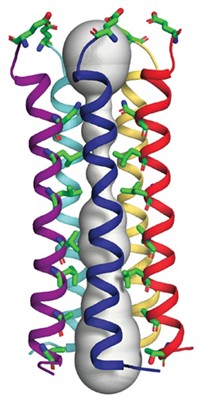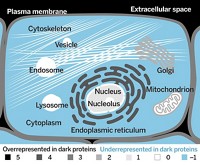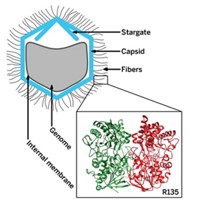Advertisement
Grab your lab coat. Let's get started
Welcome!
Welcome!
Create an account below to get 6 C&EN articles per month, receive newsletters and more - all free.
It seems this is your first time logging in online. Please enter the following information to continue.
As an ACS member you automatically get access to this site. All we need is few more details to create your reading experience.
Not you? Sign in with a different account.
Not you? Sign in with a different account.
ERROR 1
ERROR 1
ERROR 2
ERROR 2
ERROR 2
ERROR 2
ERROR 2
Password and Confirm password must match.
If you have an ACS member number, please enter it here so we can link this account to your membership. (optional)
ERROR 2
ACS values your privacy. By submitting your information, you are gaining access to C&EN and subscribing to our weekly newsletter. We use the information you provide to make your reading experience better, and we will never sell your data to third party members.
Biological Chemistry
HIV 'lipidome' looks like lipid rafts
February 20, 2006
| A version of this story appeared in
Volume 84, Issue 8
The lipids of enveloped viruses such as HIV-1 are derived from the membranes of infected host cells. Viruses are thought to bud from lipid rafts, which are assemblies of sphingolipids, cholesterol, and raft proteins in the membranes, but the existence of such rafts has been controversial because of a lack of direct evidence. Hans-Georg Kräusslich, Felix T. Wieland, and coworkers at the University of Heidelberg, in Germany, have now used mass spectrometry to show that the lipid composition of HIV-1, or its "lipidome," is very different from that of its host T cells (Proc. Natl. Acad. Sci. USA 2006, 103, 2641). Compared with T cells, the researchers find that HIV-1 contains much less phosphatidylcholine and phosphatidylethanolamine and much more sphingomyelin and dihydrosphingomyelin. The researchers believe that this unusual HIV-1 lipid composition is strong evidence for the existence of lipid rafts. They also find that inhibition of sphingolipid biosynthesis in infected cells makes the released viruses much less infective to other cells.





Join the conversation
Contact the reporter
Submit a Letter to the Editor for publication
Engage with us on Twitter